7 tips for choosing the type of foundation for a private house
The foundation is the foundation of the house, and it is not at all a figure of speech. The durability of the building depends on how correctly the type of foundation is chosen and how it is executed. The rickety houses and the cracked walls of the dacha only once again convince them of the increased responsibility of work related to the design and construction of the foundation. The first thing that anyone who starts construction should do is to choose the type of foundation of a private house, and for this it is necessary to take into account a lot of factors and know the key features of all types of foundations.
No. 1. Types of foundation by type of assembly
Depending on whether factory elements are used in the construction, or all of them are formed directly on the site, the foundations are divided into:
- monolithic. For their manufacture, the formwork is equipped, in which it is poured concrete mortar;
- precast monolithic receive when filling ready-made component elements with concrete;
- prefabricated foundations erected from reinforced concrete products manufactured at the plant.
Naturally, monolithic foundations are much stronger than prefabricated-monolithic and, especially, prefabricated, but require more time and effort to equip.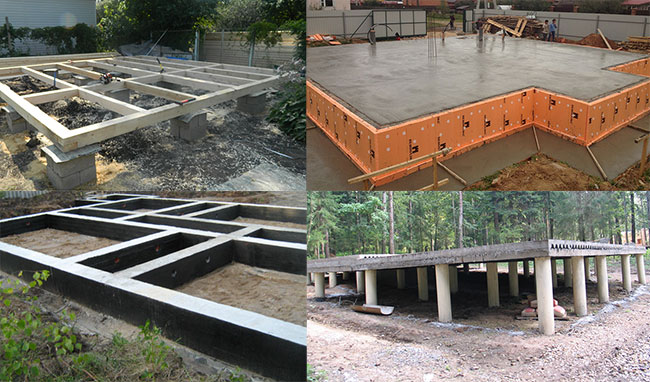
No. 2. Types of foundation for construction
All foundations used in private construction can be divided into four groups:
- strip foundations - This is a continuous sheet of reinforced concrete (much less often bricks), which is laid under all the bearing walls of the house and has the form of a closed loop or tape, from where the name came from. The most common type;

- slab foundations also called "floating", they are a continuous monolithic concrete slab, which allows you to most evenly distribute the load;

- column foundations, as the name suggests, they are a system of pillars made of concrete, brick, stone, less often - wood, and located at an even distance from each other in the locations of load-bearing walls and corners of the future home. Poles for reliability are united by a grillage (a frame that connects all the pillars), but can do without it. This type of foundation is suitable for small light houses;

- pile foundations consist of supports that are screwed in or driven into the ground (columnar foundation supports are installed in pits) to a relatively large depth. Piles can be reinforced concrete or metal, used on loose and heaving soils.

The choice of the type of foundation for the house depends on the number of storeys and dimensions of the latter, the materials of the walls and floors, as well as on the type of soil, the level of freezing, the depth of groundwater, the availability of groundwater communications, the need to equip the basement.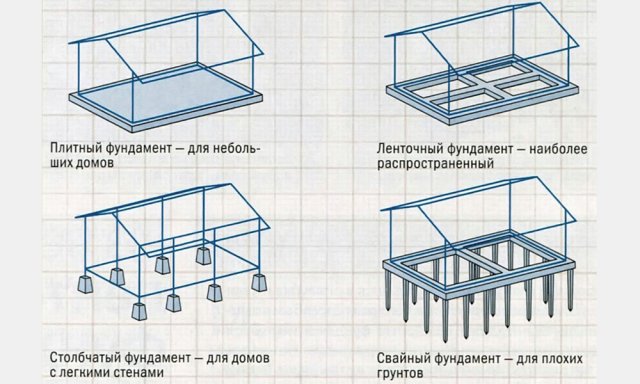
No. 3. Strip foundation for a private house
The most common type of foundation during the construction of a private house is considered tape. It is a tape or frame made of concrete, which is laid under the supporting walls. A sand and gravel cushion is formed under the concrete, which allows more evenly distributing the load on the soil and eliminates the need for more serious soil preparation before laying the foundation.Sand and gravel cushion plays the role of drainage and protects against groundwater. Foundation requires waterproofing works and warming.
The main advantages of the strip foundation include:
- the ability to withstand decent loads, so it is used in the construction as relatively light wooden housesboth 2- and 3-story brick buildings;
- the ability to use such a foundation for arranging a basement;
- the shape of the strip foundation can be any (with the exception of prefabricated structures);
- minimum amount of earthwork.
Minuses:
- the complexity of the work;
- the need for specialized equipment (at least concrete mixers, and for the arrangement of prefabricated structures - crane).

The strip foundation is of two fundamentally different types:
- monolithic;
- prefabricated.
Monolithic strip foundation form by arranging the formwork, mounting fittings and pouring sand-concrete or concrete mixture. It can be of any shape, and due to its integrity, excellent heat, waterproofing qualities, as well as durability are provided.
Prefabricated strip foundation create from ready factory reinforced concrete blocks, which greatly simplifies and speeds up the installation. Separate parts are fastened with reinforced cement, the design is inferior in strength to monolithic, and her main minus - insufficient waterproofing at the junction of the blocks, which in areas with high groundwater levels and in marshy areas can lead to a premature resolution of such a foundation. Much less often prefabricated foundations are equipped from brick, but their service life is less than that of concrete.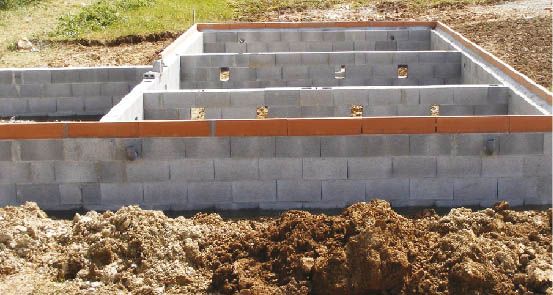
Separately, it is worth highlighting intermittent strip foundation, which is laid not with a solid line, but with separate sections, but clearly under the supporting elements. This design allows a good save on the construction of lightweight buildings.
In those cases when there is weak soil under the strip foundation, its foundation needs to be expanded, and they do it at the expense of formation of ledges, resulting in a stepped design: the main part will be assigned to the wide part (sole). Foundation is also possible. trapezoidal: The lower wide part will become the main support. If groundwater is located at a shallow depth, it is recommended to use special grade concrete and additionally protect it with bitumen mastic.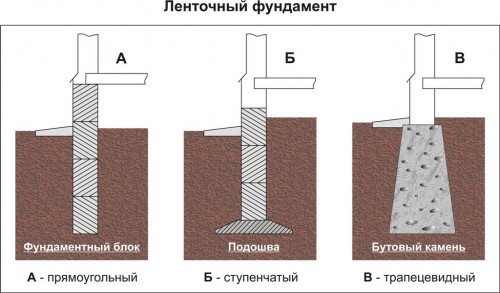
As is clear from the above, The strip foundation can be built from the following materials:
- reinforced concrete structures provide the greatest strength and durability, relatively cheap, but require a lot of time;
- concrete constructions characterized by the presence in the concrete solution of large particles of gravel, brick, boulders. They are inexpensive, able to withstand decent loads;
- brick foundation - In fact, ordinary brickwork, but buried in the ground. Such a base is used when it is not possible to equip a monolithic concrete foundation, can withstand the weight of houses up to five floors.

The depth of the foundations is divided into:
- shallow (depth 50-70 cm) - an option for loosely soiled soils, i.e. those that are little susceptible to frost heaving;
- deeply buried laid at a depth of 20-30 cm below the level of soil freezing. Used for the construction of heavy structures and in places with complex soil.
Number 4. Slab foundation for a private house
Slab foundation equip in areas with loose, heaving and moving soil. A monolithic concrete slab, located under the entire future structure, prevents the negative effects of soil movements and allows you to evenly distribute the load of the house on the soil. Under the action of swelling of the soil, this type of foundation is able to uniformly rise and fall again (therefore it is called floating) - cracks in its structure and load-bearing walls of the house do not appear.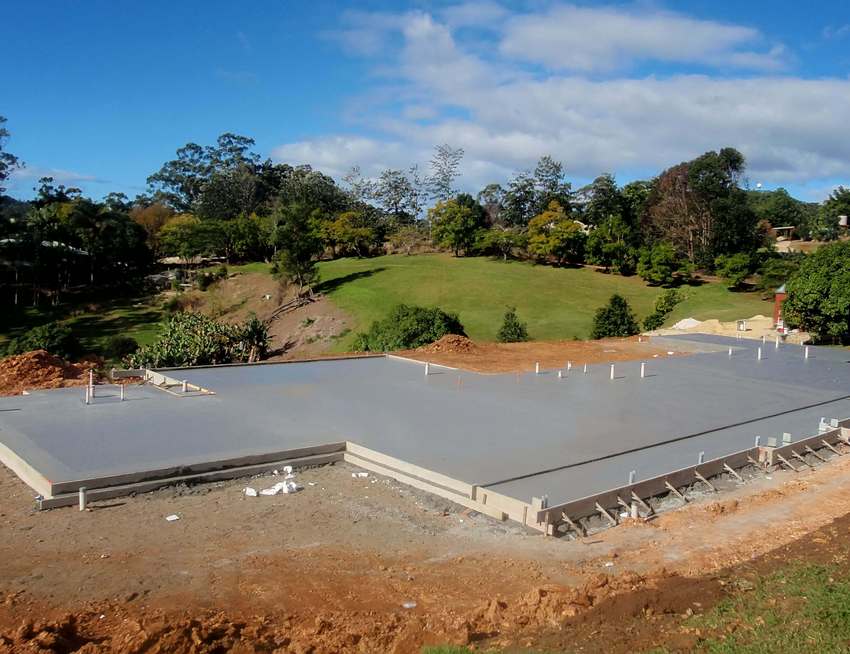
The slab foundation is made of several layers:
- geotextiles;
- sand and gravel pillow;
- insulation layer:
- concrete with reinforcing reinforcing cage.
The thickness of the main concrete layer ranges from 30 to 100 cm, only monolithic structuresTherefore, concrete is prepared and poured into the formwork in place. In rare cases, ready-made concrete precast slabs, but a similar method is allowed only during the construction of small light structures, since the strength of such a foundation is not very high.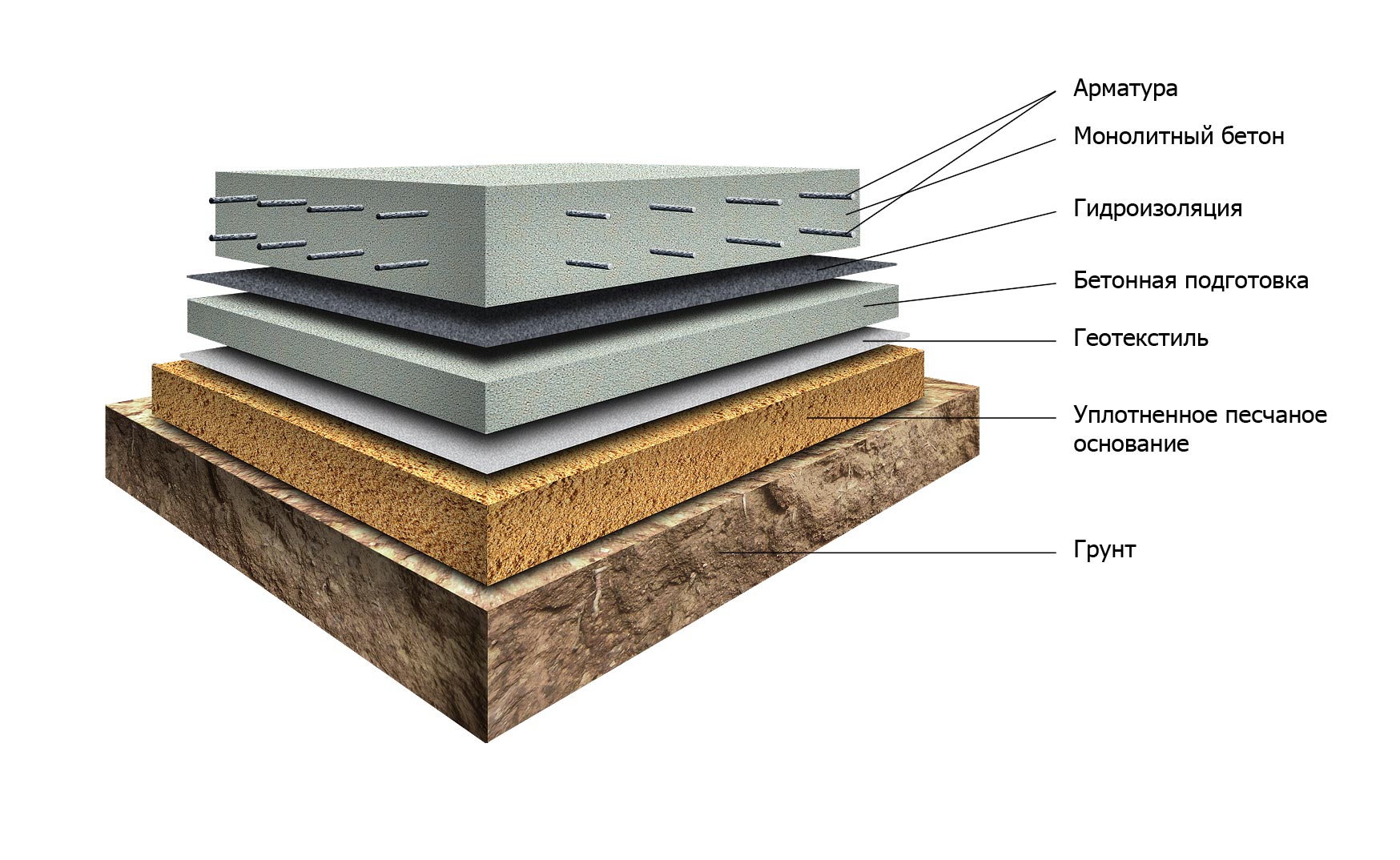
Sand and gravel layer is used to level the base, sometimes it is replaced with concrete of low strength. Be sure to use such a foundation when using waterproofing material. If you need to build a large house, then on a concrete monolith it is recommended to do expansion joints - the foundation is simply cut into smaller parts. This prevents cracking.
The advantages of the slab foundation:
- uniform distribution of load of bearing structures on the foundation;
- sufficient strength, ability to tolerate vertical and horizontal deformations;
- for areas with weak soil types, this is actually the only option to organize a solid foundation;
- additional floor slabs are not needed for the floor, and with good insulation, such a foundation can even be used as a rough floor.

Minuses:
- the inability to equip the basement;
- high cost, this is the most expensive of all types of foundation for the house, so its use is justified only in areas with loose soil;
- the need for a flat terrain, otherwise the site must be properly planned.
No. 5. Column foundation for a private house
For light wooden and frame houses perfect column foundation that differs relative simplicity in arrangement and low costs. Such a foundation is the privilege of areas with normal soil, but provided that the foundation is laid at a depth below the groundwater table, it can also be used on heaving soils.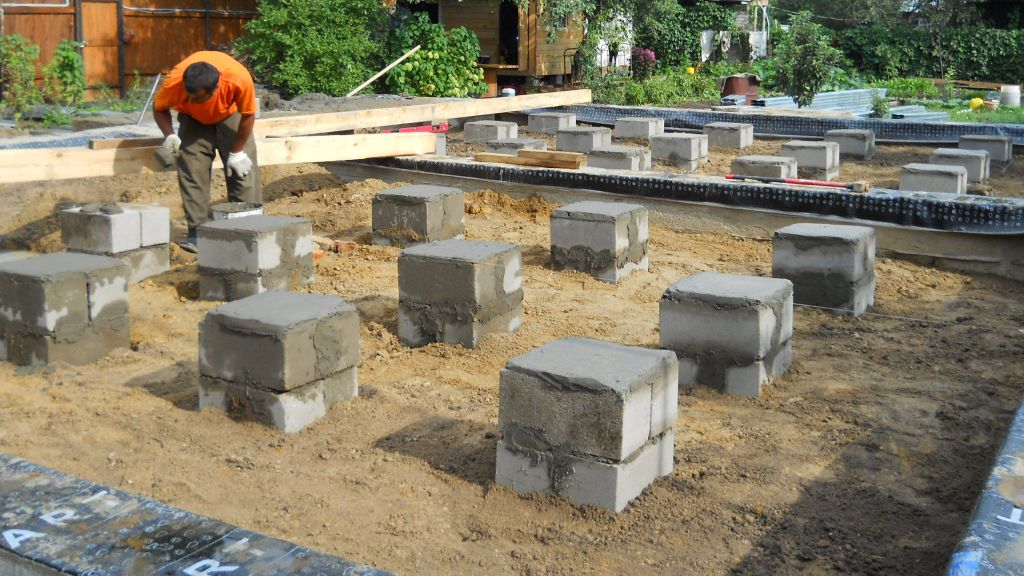
The column foundation consists of columns equally spaced from each other, recessed into the ground. Pillars may be:
- concrete with reinforcement;
- brick;
- wooden;
- stone;
- concrete concrete.
The most durable are concrete and concrete, they withstand severe loads, brick poles are inferior to them, and wooden can only be used as a base for small wooden buildings (barn, the bath etc.). Poles to increase strength and reduce mobility from above can be connected by strapping beams made of reinforced concrete.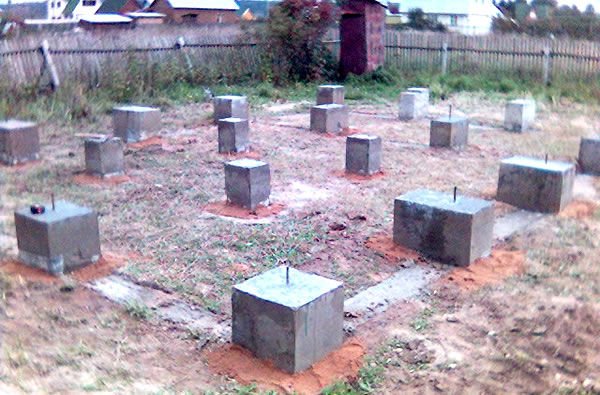
Under the column foundation, it is recommended to equip a sand layer with a thickness of about 50 cm - it will prevent swelling. Pillars are installed at a distance of 2-3 m from each other along the contour of the house, in the corners of the structure and at the locations of the supporting partitions. Column foundation can be:
- monolithic. All supports are created on site, reinforced concrete or butobeton and wooden formwork are used;
- prefabricated. For its construction, concrete supports made in the factory are used. They are installed on special "glass pillows" with a thickness of about 0.15 m.
The calculation of the number and depth of the pillars is made taking into account the type of soil and structure. If the building is small and light, then it is even allowed to use a shallow (this is about half the normative depth) and a shallow foundation (40-50 cm).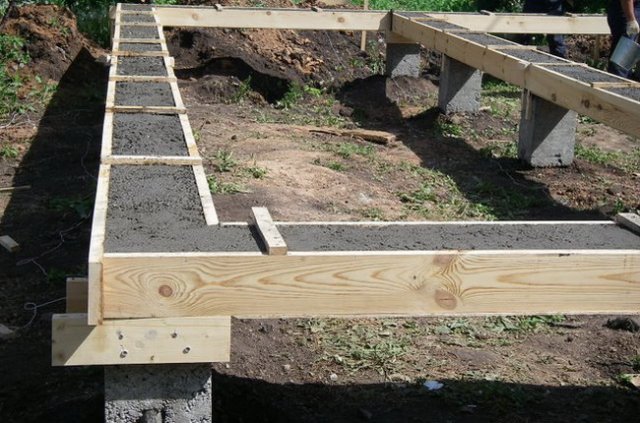
Benefits column foundation:
- the relative simplicity and cheapness of the arrangement;
- Ideal for erecting on stable soils of small houses.
disadvantages:
- difficulties in arranging basements and underground garages;
- low strength and the inability to use on very moving soils - supports can bend and even tip over, which will entail deformation of the building.

No. 6. Pile foundation for a private house
Pile foundation consists of a system of piles, long pointed poles that are driven in or screwed into the ground directly or at an angle. The large length of such elements allows their use in areas with weak and loose soil, because they are set to such a depth as to rely on stronger and denser layers of soil that do not freeze in winter. This principle allows the use of a pile foundation even in the most difficult conditions. From above piles are connected by a concrete slab or beam - grillage. This type of foundation is used for the construction of wooden, wireframe, panel and other non-heavy houses, as well as fences on marshy and peaty soils.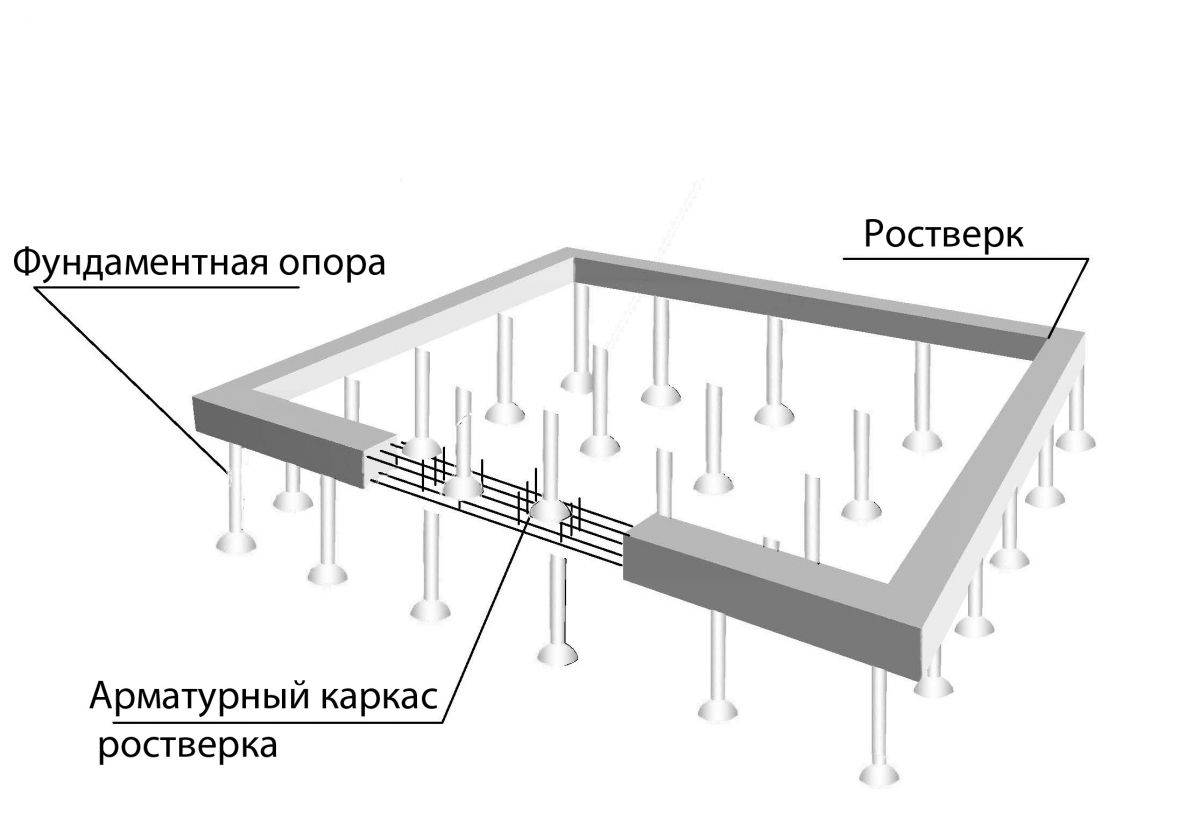
Piles can be made of such materials:
- tree. They are used to support light wooden houses; they are made of pine treated using special technology;
- reinforced concrete - the most durable material, which is suitable for the construction of more or less heavy structures;
- metal also has high strength characteristics and is not inferior to reinforced concrete;
- combined piles, usually combine metal and concrete - such strong foundations are suitable even for the most difficult marshy soils.

According to the installation technology, piles are:
- driven - These are, as a rule, reinforced concrete piles with a pointed end, which are immersed in the ground with the help of special drum sets. Not suitable if there are buildings nearby, as the shock wave can damage them;
- bored they involve the preparation of a well, the arrangement of a framework of reinforcement in it and its pouring with concrete;
- screw piles - These are hollow metal rods with blades at one end, can be installed manually or screwed in using specialized equipment. Suitable for soils of any density;
- pressed piles they are installed by special hydraulic pumps, rarely used in private construction, as neighboring buildings can be deformed by the shock wave.

Among the main advantages of the pile foundation:
- the ability to install on any type of soil, there is no dependence on the level of groundwater;
- reduction in the amount of concrete consumed;
- reduction in the amount of earthwork;
- relative speed of installation.
disadvantages:
- the need to use specialized equipment for transportation and installation of piles;
- relatively high cost.

Number 7. What is important to consider when choosing the type of foundation?
It is better to entrust the calculations and design of the foundation to specialists, especially when it comes to a large house with heavy load-bearing walls and ceilings. If a private house or a small cottage is built on its own and has a small weight, then many prefer to do without detailed calculations, which is not entirely true. To avoid mistakes, it is necessary to take into account a lot of factors, and the main principles for choosing the type of foundation for the house and its arrangement are:
- on heavily heaving soils, the foundation must be equipped below the level of soil freezing. In conditionally non-porous, the depth of the foundation may be 0.5-1 m;
- the average and maximum depths of soil freezing are inconsistent, and determining them is not always easy. The relevant data should be with the organization that owns the land, along with other characteristics of the soil, otherwise you will have to conduct your own research. The most unreliable way is to ask the neighbors on the site, but the soil can be heterogeneous, so such data is not always accurate;

- the denser and wetter the soil, the more it freezes in the cold season. The most difficult in this respect is clay soil, which, moreover, that swells, is also uneven.The most effective way to prevent possible deformations is to replace complex soil with sand or arrange a sand cushion;
- sandy ground It is considered ideal for the construction of any kind of foundation and the construction of brick houses, aerated concrete, foam block and other materials, it passes water well, almost does not swell. Rocky ground practically do not swell, do not freeze and do not change their properties under the influence of external factors, but it is difficult to organize the foundation in them due to the increased hardness. Clay soils require either arranging a sand cushion or using piles;

- if other massive structures are located near the proposed construction site, then you should definitely consider total ground load;
- on silty and heaving soils, it is better not to use a strip and column foundation;
- the pile foundation is justified only when other options are not suitable at all - it is expensive to arrange.
The foundation will last for many years, if you do not forget to also take care of its waterproofing and insulation. Much also depends on the quality of the materials used and the responsibility of those who build the foundation.

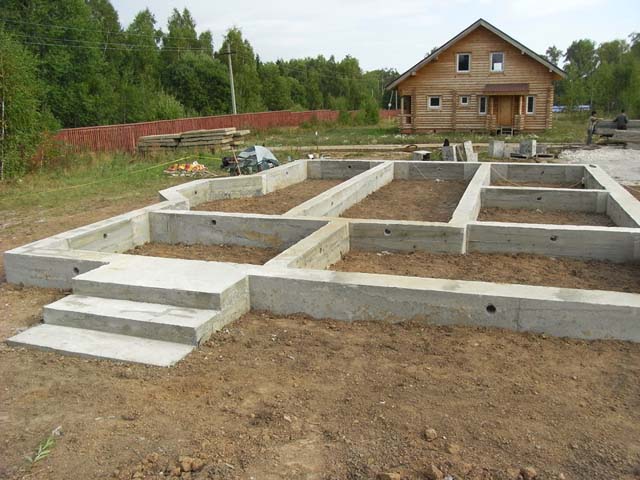
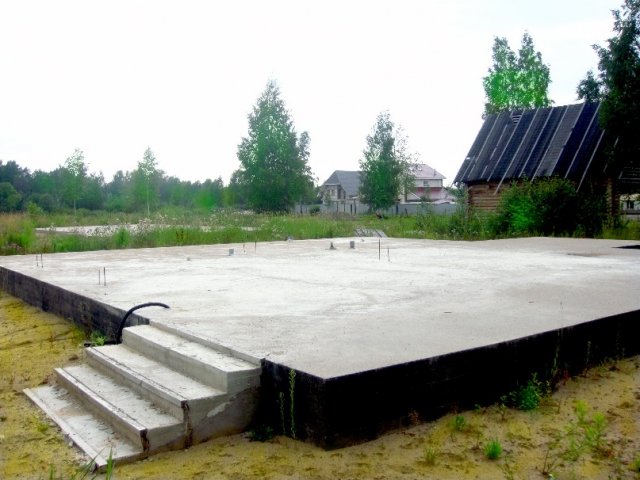
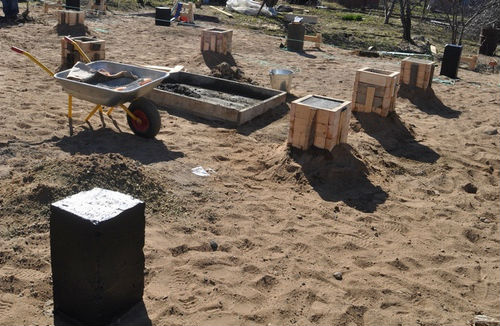
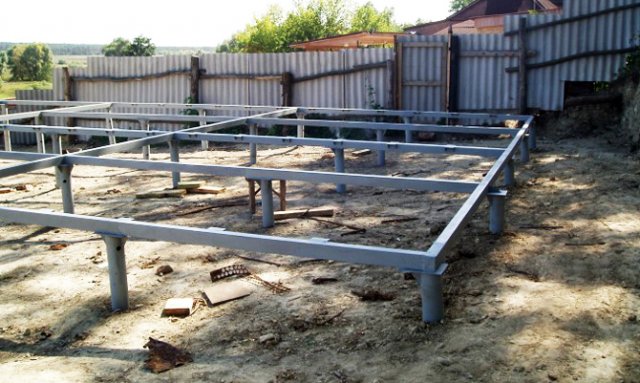
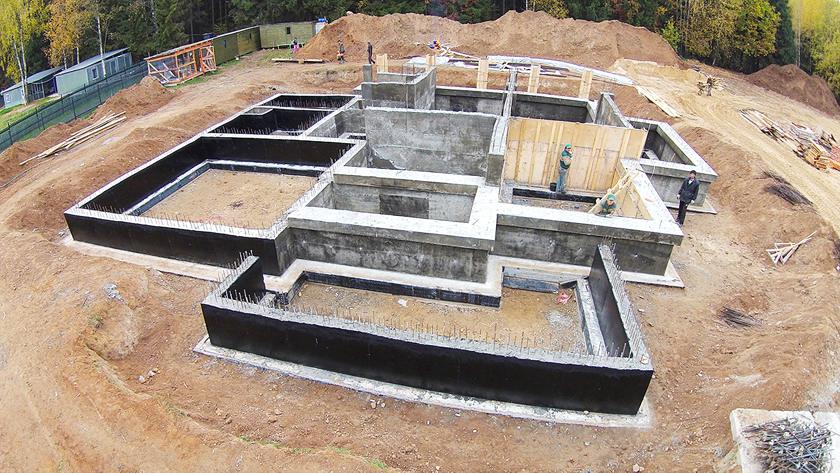
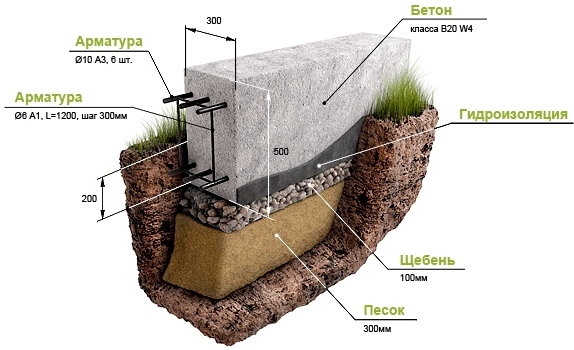
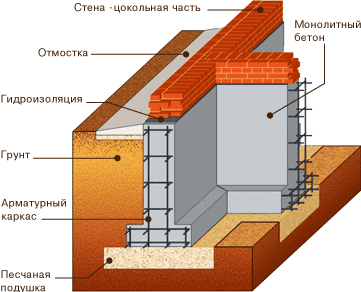
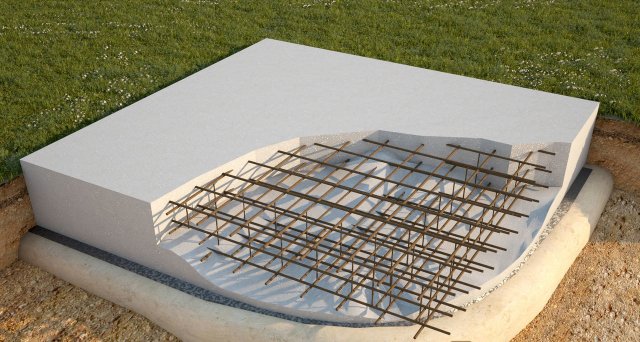
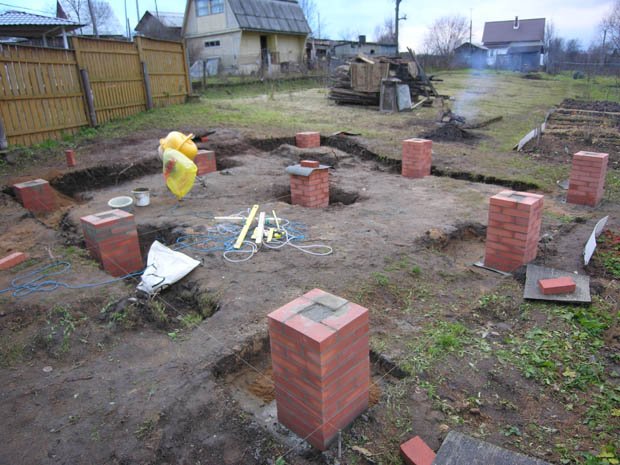
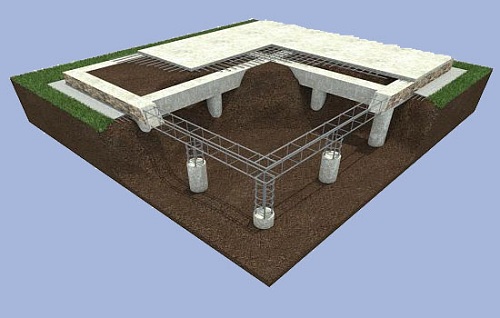
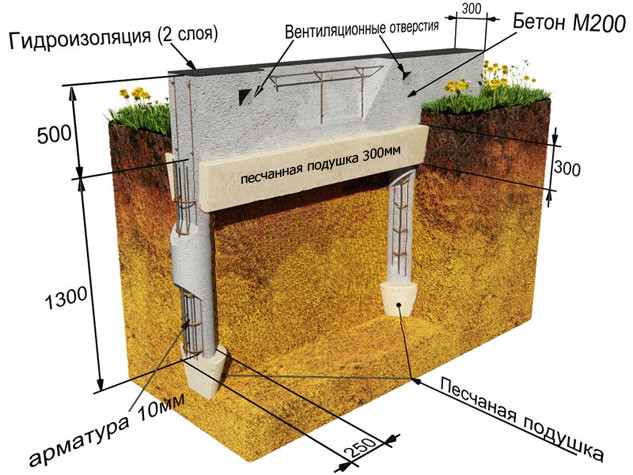
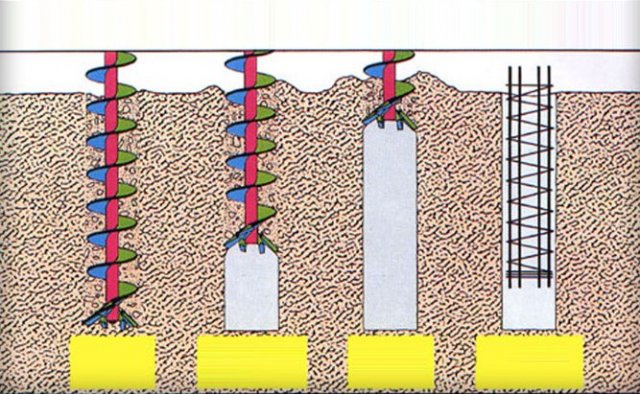

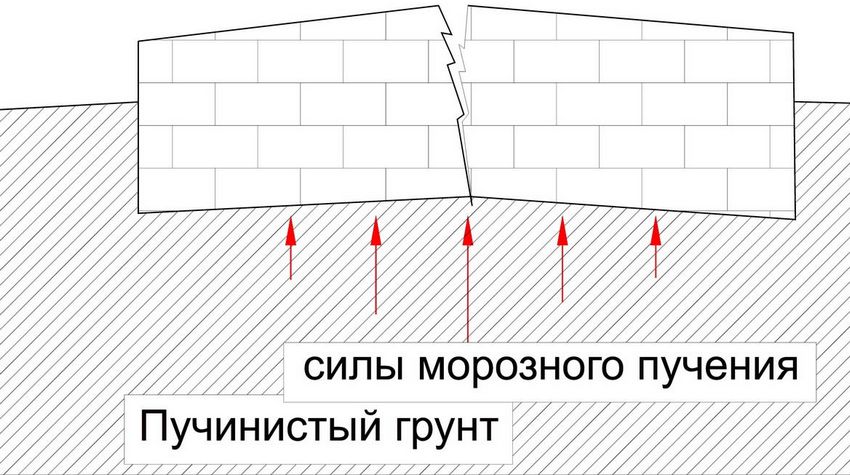
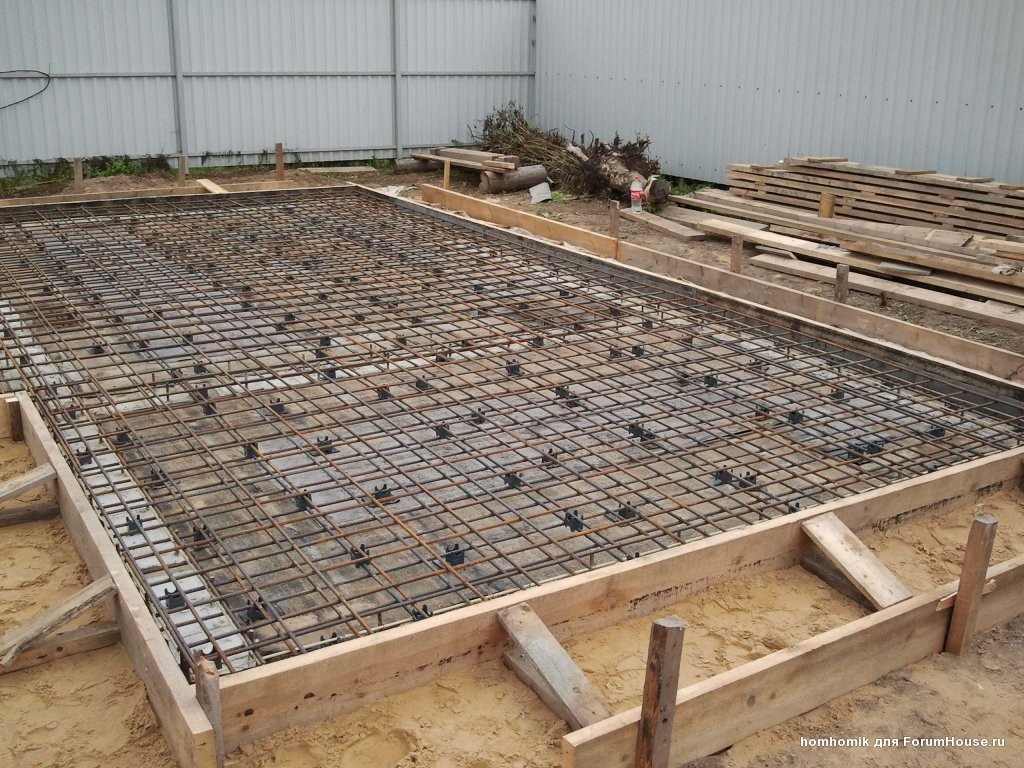
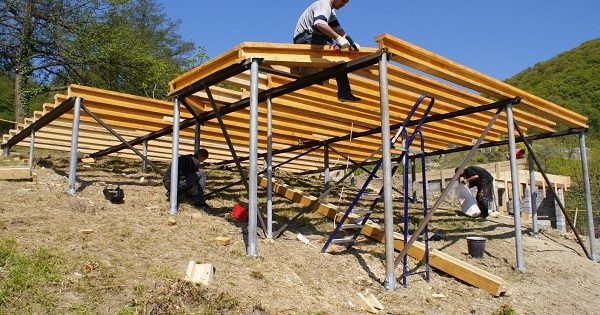
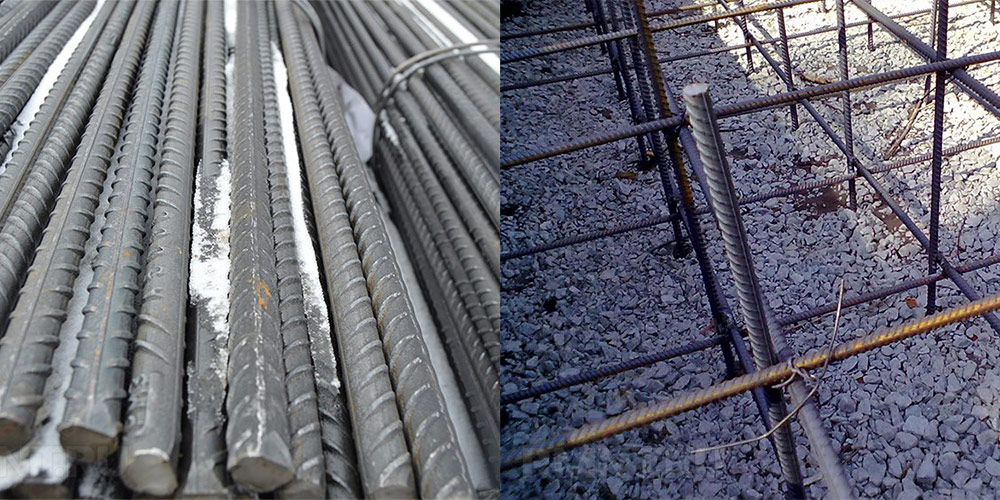
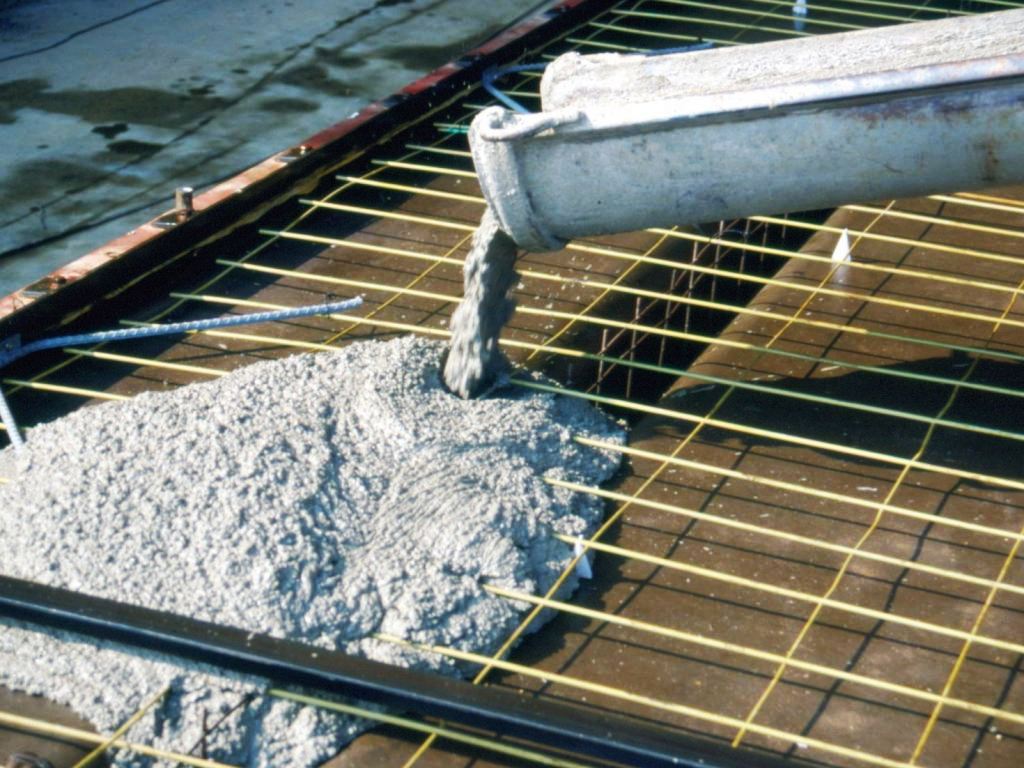

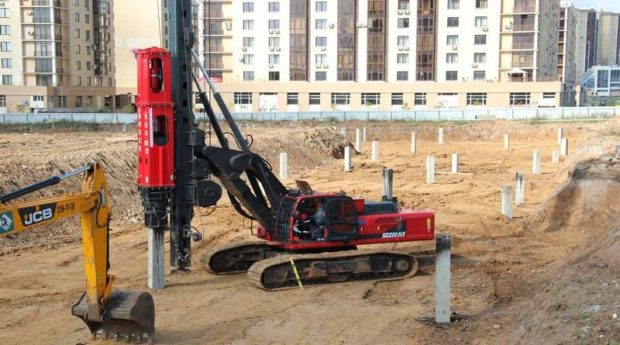
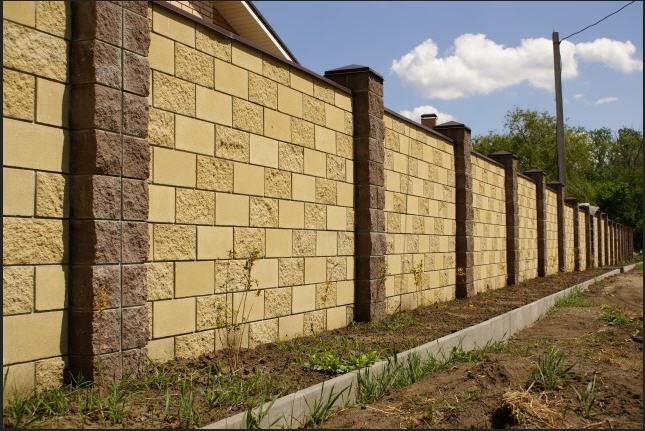
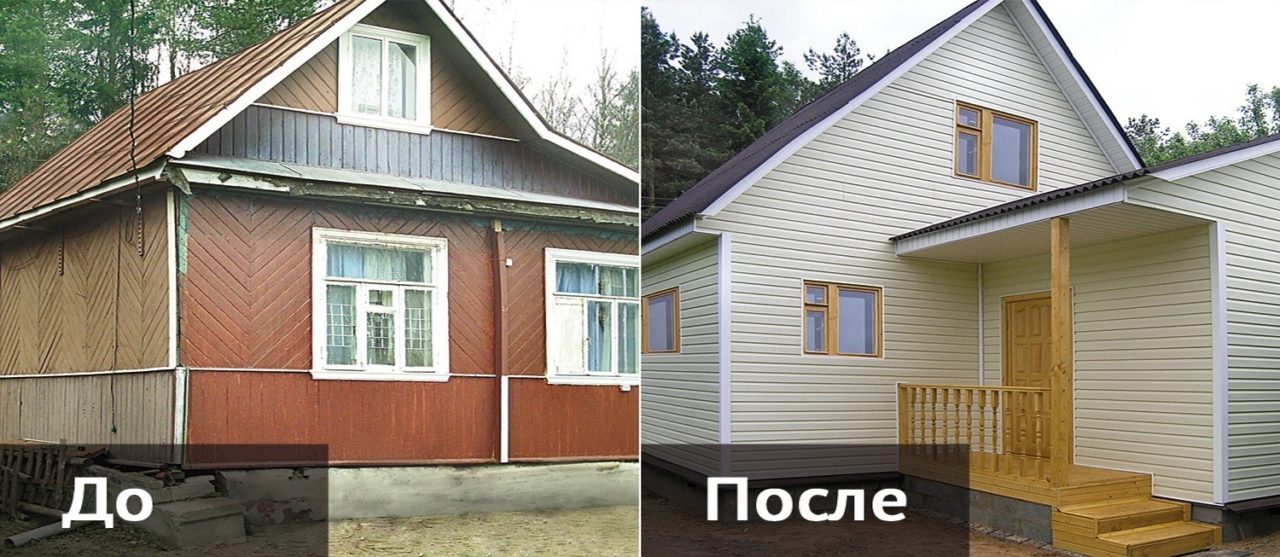
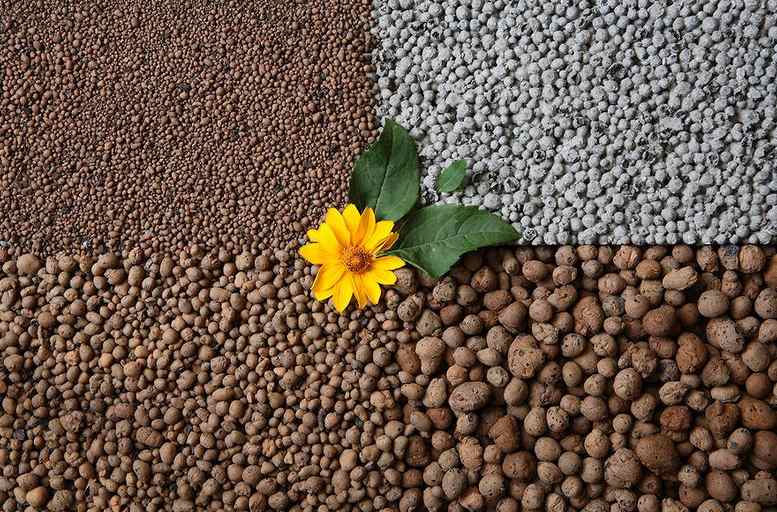
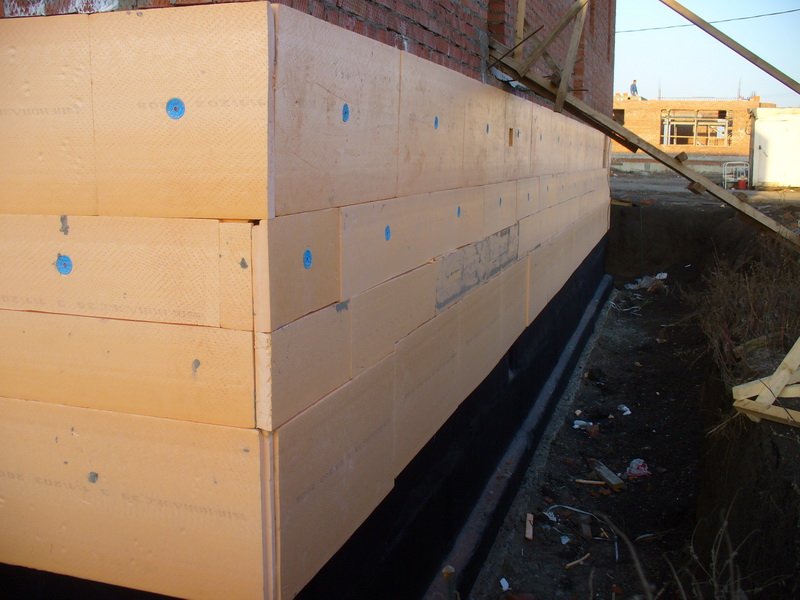
Do you want long-term, give it all on the slab foundation ...